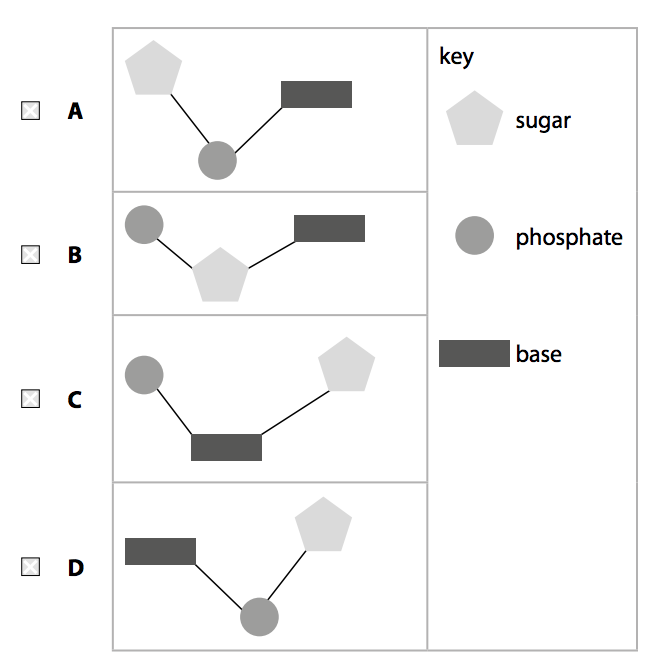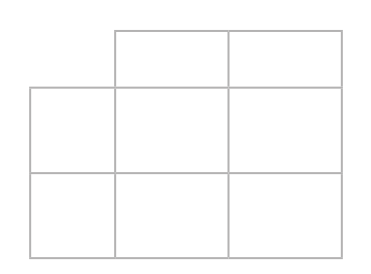B1 Specimen (set 1) - Q4
4)
(a) DNA is composed of four different DNA nucleotides.
(i) Which diagram represents the arrangement of the sugar, phosphate and the base in a DNA nucleotide? [1 mark]
(ii) An allele starts with the DNA sequence ATGCATGTACCG.
Give the sequence of the complementary DNA sequence. [1 mark]
(iii) The length of one DNA nucleotide was measured at 3.3 × 10–10 metres.
Calculate the approximate length of a gene containing 250 nucleotides in nanometres. [2 marks]
(b) The DNA of an organism determines its phenotype.
White tigers are produced because of a mutation of a single allele which usually produces the normal orange and yellow fur pigmentation.
The mutated allele is recessive.
Samba, a male white tiger, was bred with Rani. They had three offspring; two offspring have white fur and one has a normal fur pigmentation.
(i) State the genotype of Rani. [1 mark]
(ii) The offspring with normal fur pigmentation was bred with a tiger that was heterozygous.
Use A/a to represent the alleles for fur pigmentation.
Predict, using the Punnett square, the percentage probability of the offspring from this cross having normal fur pigmentation. [2 marks]
(c) Explain how two parents with a dominant phenotype can produce offspring expressing a recessive characteristic. [2 marks]
(Total for Question 4 = 9 marks)


